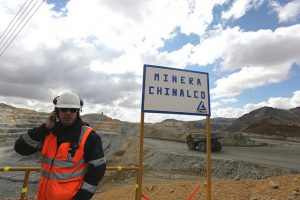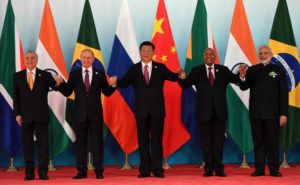China is rapidly emerging as an important testing ground for the development and implementation of green finance policies. While green bonds account for just 0.2% of the global bond market, in China this figure is already 10 times greater, at 2%.
The country has been particularly active recently on the green finance agenda. In 2016, the government launched the G20 Green Finance Study Group (GFSG) at the G20 meeting in Hangzhou, which resulted in a seven point plan to scale up green financing globally that was included in the leaders’ communique.
At this year’s G20, the Hamburg Action Plan to address pressing global challenges included GFSG proposals on encouraging financial institutions to undertake environmental risk analysis and improving the availability of environmental data.
And domestically, the Chinese government announced five provincial-level trials in June aimed at reform and innovation in green finance. These will allow each province to pursue their own approach to developing green finance.
So what are policymakers learning from China’s actions? And what are the challenges both globally and for China?
At a recent event on green finance organised by five bodies, including the China Society for Finance and Banking’s Green Finance Committee and the UN Environment Programme, Caixin put these questions to Ma Jun, who is chair of the Green Finance Committee, special advisor to the UN Environment Programme on Sustainable Finance, and co-chair of the G20 Green Finance Study Group.
Caixin: What are the main challenges to the development of green finance currently?
Ma Jun (MJ): There are four main challenges: a lack of policy signals; loan periods that aren’t suitable for long term projects; a lack of capacity building; and a lack of a common definition of ‘green assets’.
Before the G20 Green Finance Study Group was founded there weren’t many international policy signals. It’s important to set out and propagate the ideals of green finance – to governments, to policymakers, to financial institutions, and to market participants.
Another thing is that if you look into China’s banking system, you find the average length of a loan is only two years. So if you need funding for a ten-year project you need to raise funds five times. That greatly increases investment risks because if you fail to get the next loan the project is forced to shut down.
A lot of green finance projects: subways, railways, water treatment, solid waste, new energy, etc., have lengthy investment periods. It might be 10, 15 or even 20 years before investments see a return. This is far beyond the loan periods offered by banks in developing nations.
The best way to resolve this issue is green bonds. I think turning green assets into bonds is an extremely clever solution to the problem of loan length but it needs development.
Another challenge is a lack of capacity building. We need to spend at least five to ten years building capacity in government, financial institutions and academia, and for industry to raise finance.
There’s a particular need to boost the ability of financial institutions to evaluate environmental risks; to analyse and quantify risks. This is why in its second year the G20 Green Finance Study Group is encouraging financial institutions to analyse environmental risks.
Then there’s a lack of standardisation. Many green assets haven’t been standardised or categorised. So even if investors want to invest in green assets, they can’t find them.
Standards for green assets is a hugely complex issue but China is moving more quickly on this than some other countries. We’ve got standards for green assets and green bonds, but not yet for green insurance, green funds and so on.
We’re only halfway along this road but some countries don’t have any of these standards… it isn’t a simple matter; there are many, many steps to be taken before we get to a final unified global system of standards for green assets.
Caixin: On the topic of standards, the definitions of green finance differ between China and the European Union. What’s your view on that?
MJ: There’s no single European standard that can be used as a point of comparison with China. Many European banks, including the European Investment Bank, have their own market-based rules on green bonds. You can’t compare all those different standards with our single standard. Once there’s consensus in Europe you could carry out a comparison with China.
The earliest cooperation between China and Europe started with the Green Finance Commission and the European Investment Bank, and that’s now advanced to the European Commission where there’s discussion on whether Europe should have its own standard for green bonds.
In technical terms, many green financial products in the West partially overlap with those in China. If we designed a system where green products in Europe were included as a sub-category of China’s green products, we’d reduce trading costs and the expenses international investors incur in the search for projects.
Of course, developed and developing nations have different priorities when setting green finance standards. For developing nations such as China, it’s not just about reducing carbon emissions – we also want to deal with a range of environment issues, such as air, water and soil pollution. Some of those issues aren’t significant problems in Europe. So when defining green bonds, Europe and China have different priorities.
Caixin: The most controversial of the project types supported by green bonds in China may be clean coal. What do you think about such projects getting green financing?
MJ: Defining green finance isn’t just a matter of basic technology, it also reflects a nation’s environmental protection priorities. Clean coal reflects this: China needs to prioritise reduction of air pollution, so it’s going to put a lot of effort into reducing emissions of sulphur dioxide and nitrogen oxides. Those come primarily from coal-fired power generation, but can be reduced by the use of sulphur and nitrogen scrubbing technologies. If your priority was reduction of carbon emissions, you’d ban coal-fired power to bring about zero emissions.
But with clean coal perhaps it would be possible to use a stricter definition to ensure particular technologies are used in projects getting green finance. Once the standard is tougher the difference with the other standard will shrink. That’s one approach we could take.
Caixin: In June, the Chinese government started trials of green finance reform and innovation in Zhejiang, Jiangxi, Guangdong, Guizhou and Xinjiang. Have these had any impact on funding for green projects?
MJ: We’ve seen some positive signs, with preferential and stimulus measures taking shape, and some local governments are encouraging local firms to issue green bonds. Each of the five trial areas has its own policy on providing subsidies or underwriting. We’ll see the cost of financing for green projects come down.
This article was originally published on the Caixin subsidiary Wusuobuneng. It is edited and republished with permission.






